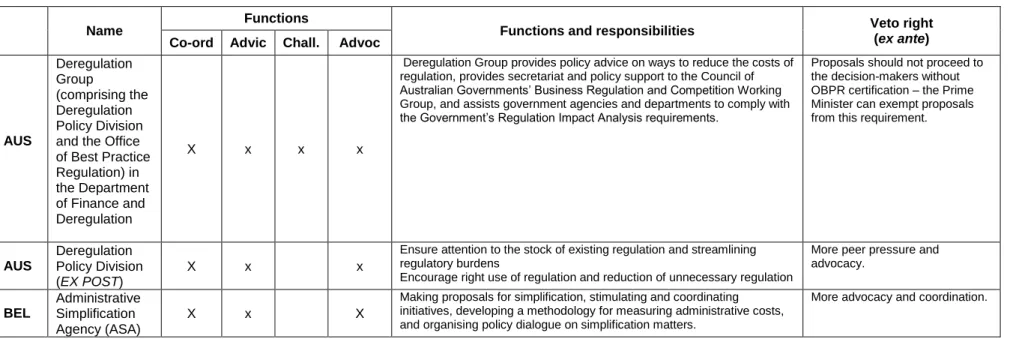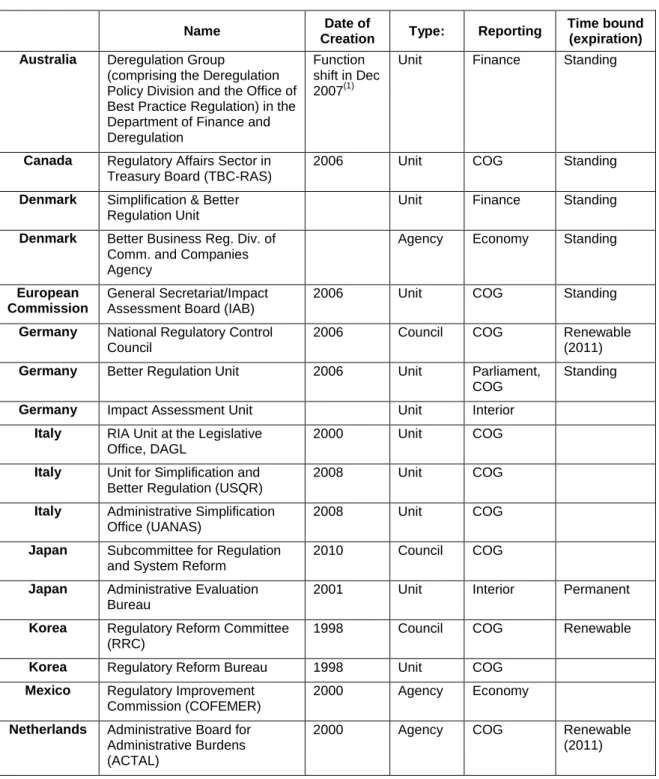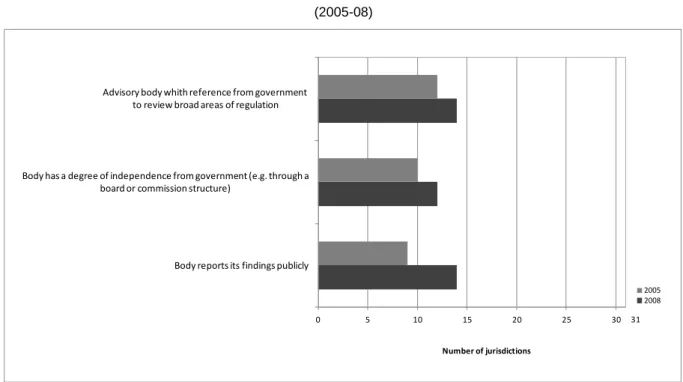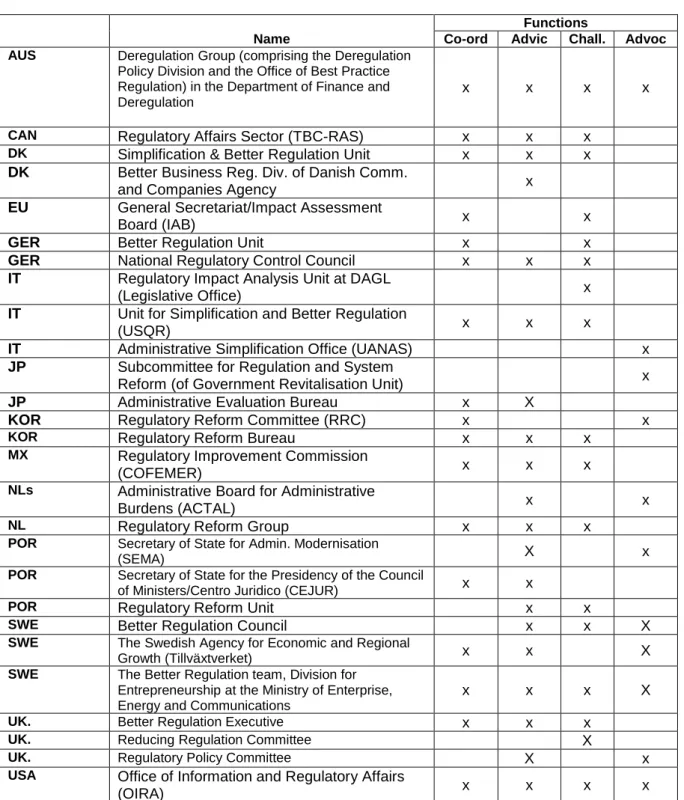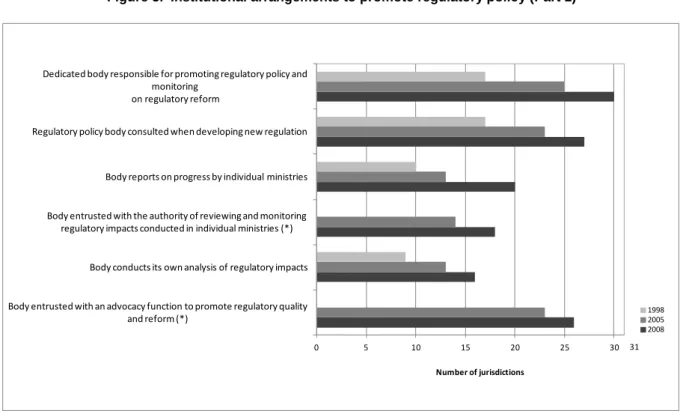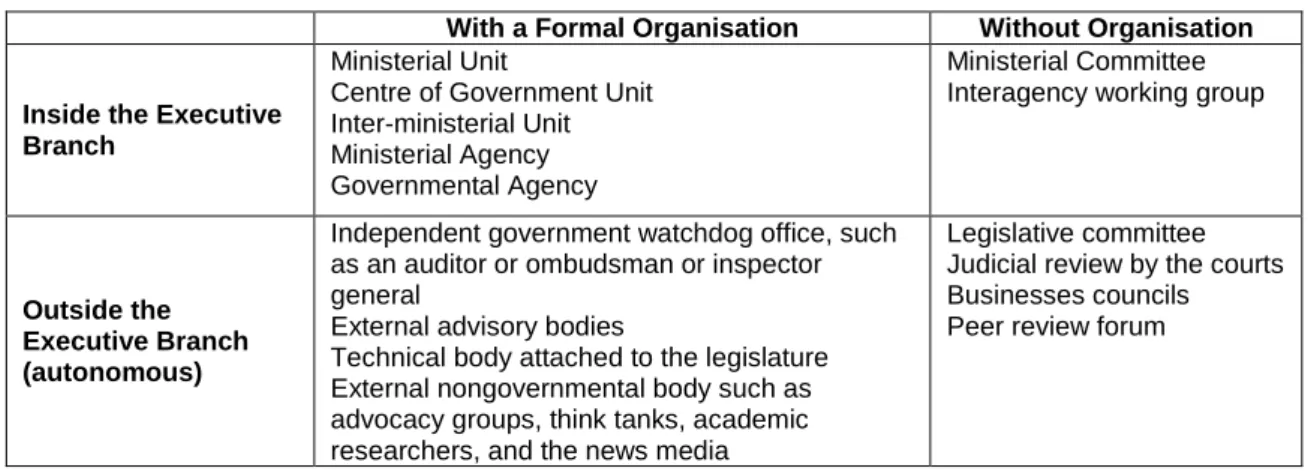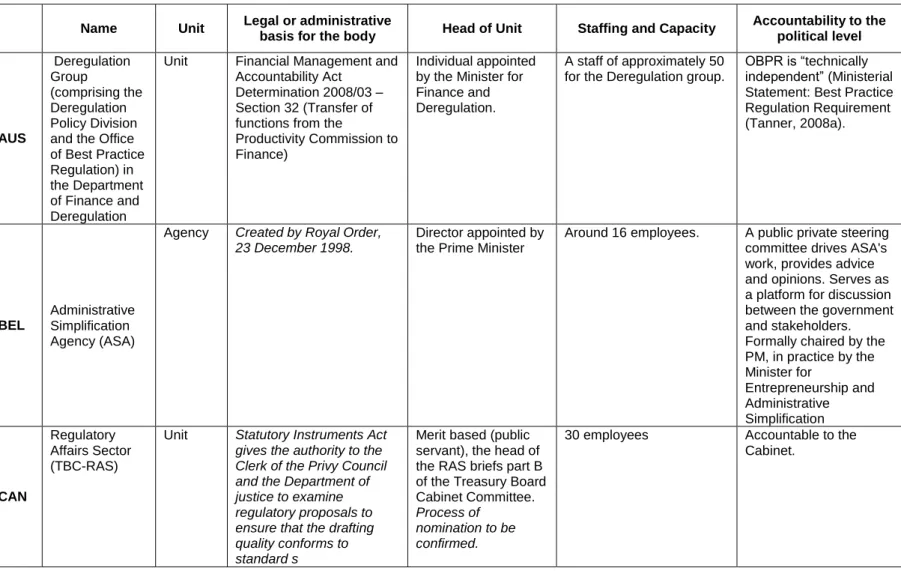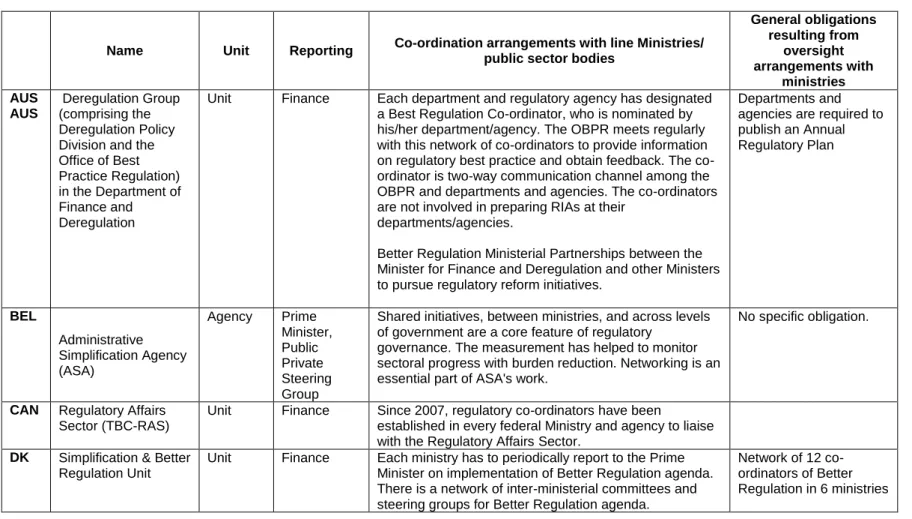SEPCM Minister of Foreign Affairs for the Presidency of the Council of Ministers (Portugal) TBC-RAS Regulatory Affairs Sector in the Treasury Board of Canada Secretariat (Canada) USQR Unit for Simplification and Better Regulation (Italy). These institutions, known as regulatory oversight bodies in the context of the current report, have therefore become an integral part of regulatory reform programs in many countries. This report focuses on the institutional aspects of regulatory governance through the analysis of the regulatory oversight bodies.
This effectively turns the supervisory body into a "gatekeeper" with a veto on the quality of the proposed regulation. Depending on the power of the regulatory body, some statements can become virtually impossible to ignore. The fourth core function for the supervisory body is to unilaterally encourage improvements to the legislative framework.
Other supervisory bodies have been located in or report directly to the center of government (see the section on the location of the supervisory body, Part II.). However, many of the non-permanent supervisory bodies have seen their mandate renewed over time. It is based on available OECD resources.12 The table provides a general overview of the supervisory bodies across OECD countries.
Portugal Secretary of State for the Presidency of the Council of Ministers/Centro Juridico (CEJUR).
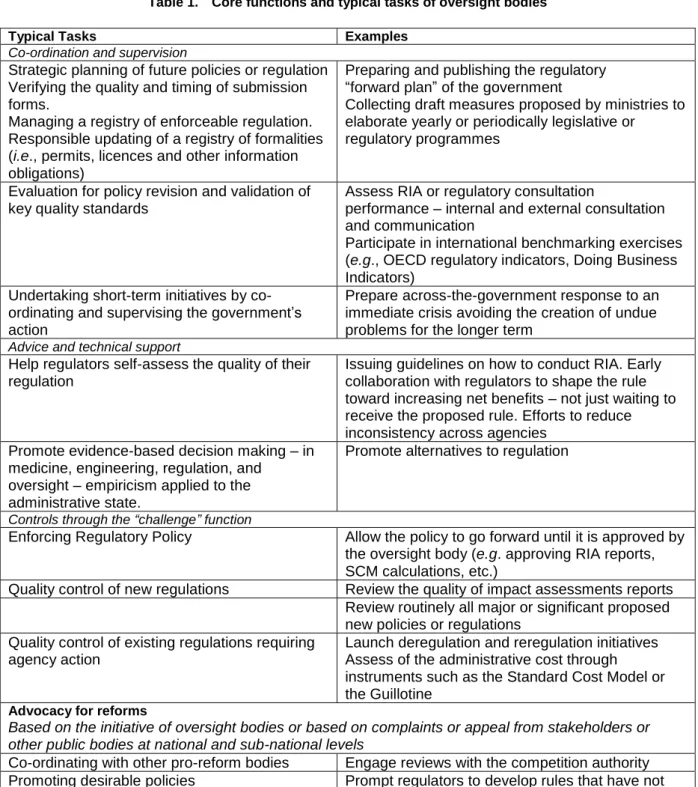
KEY FACTORS CONTRIBUTING TO THE SUCCESS OF REGULATORY QUALITY OVERSIGHT REGULATORY QUALITY OVERSIGHT
One of the ways for governments to address this problem has been to include strict political accountability mechanisms in the oversight body's mandate. For example, UK ministers are required to "certify" the adequacy of the analysis in the RIA when they submit it to the BRE. OIRA, and for ex ante screening of rules and for raising the stock.
These forces have also shaped the operation of the regulatory body and influenced its location and reforms. In the Netherlands, the establishment of the Steering Group for Better Regulation has helped to strengthen the links between the main regulatory ministries and the other supervisory authorities. In Greece, for example, the Minister of the Interior is responsible for implementing better regulation policies.
These rules can also help to smooth the work and responsibilities between appraisers and the head(s) of the supervisory body. In particular, some supervisory bodies have developed regular decision-making procedures for the management and good functioning of the organization. This includes, for example, rules for the operation of the executive board of the supervisory body.
Supervisory bodies have usually developed procedures to manage the advice and quality assurance of the assessments provided. As the supervisory process is being refined, supervisory authorities must avoid conflicts of interest arising from their different core functions. The location of the supervisory authority involves many compromises within the state apparatus.
In the United Kingdom, the establishment of the independent Regulatory Policy Committee in 2010 addresses the need for objectivity and credibility in the supervisory process by expressing public opinion. The NRCC has formal authority to oversee the quality of the analysis associated with the Administrative Burden Reduction Program. For example, ACTAL in the Netherlands is a committee-based agency governed by a 3-member board and a 13-member secretariat.
This was originally the reason for locating OIRA within the Executive Office of the President in the United States. As mentioned above, many oversight bodies are required to account to the government for progress in implementing and enforcing the policy.
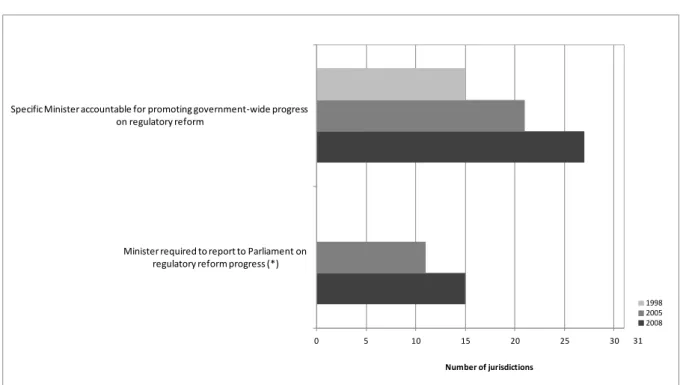
ASSESSING THE PERFORMANCE OF REGULATORY OVERSIGHT INSTITUTIONS
For example, some countries have ensured that the heads of the oversight bodies are nominated by heads of state and confirmed by Parliament (eg the USA OIRA). It builds on decades of continuous policy improvements, where the thrust of the policy has been preserved over time, while demonstrating that "Better Regulation is not a "one shot" policy, and must be part of a continuous process of adaptation.‖ The most recent changes involved the formalization of the role of the Downsizing Regulation Committee, as a body that gives the approval to regulate and deregulate the One-in, One-out system of Regulatory control. to force, while leaving the role of the Regulatory Policy Committee to provide independent technical advice and investigation. , through a public comment, which is expected to be submitted with any regulatory proposal. In the US, the OIRA has a rapid letter developed advocating reforms and offering new tools in addition to the challenge function.
In fact, the establishment of the Better Regulation Council in Sweden and the National Regulatory Control Council (NRCC) in Germany have been welcomed by many stakeholders. The SEMA website provides extensive information about the Simplex Program and is accessible via the government website, but also via the Citizen Portal and the Business Portal.1 The Ministry of Justice has developed a specific website on administrative simplification, with information about simplification measures for citizens and companies within its area of competence, for example company registration and tax, accounting and statistical information, trademarks and patents.2. In the US, the first budget control law was the Anti-deficiency Act passed in 1870 to control the government's spending spree.
In particular, the current OECD Assessment of Regulatory Capacity in 15 EU Member States (hereafter referred to as the EU15 Project) as well as the report Implementing Regulatory Reform: Building the Case through OECD Results (2008b) were used. The current predecessors of the Office of Better Regulation (OBPR) - the Business Regulation Review Unit (BRRU) from 1985 to 1989 and the Office of Regulatory Reform (ORR) (1989 to 2006) were organized by the Productivity Commission. Allio, Lorenzo (2007), ―The European Commission's Impact Assessment Board: Initial Developments‖, European Risk Forum Background Note 02, p.
OECD (2007c), OECD Reviews of Regulatory Reform, Sweden, Achieving Results for Sustained Growth, OECD (2008a), Implementing Regulatory Reform: Building the Case through Results, Chapter 3: “The. Proposals may not go to decision makers without OBPR certification; the Prime Minister may exempt proposals from this requirement. The Ministry of Finance only examines the part of the analysis of the economic consequences for the government.
The head of the competent administrative authority takes into account the recommendation and forwards the findings to the RRC. CEJUR provides an analysis of the compliance of the proposal with the Constitution, EU law and other higher regulations. The RPC focuses on the options considered for implementation and the robustness and quality of the analysis.
The Prime Minister holds the chairmanship jointly with a chairman of the RRC from the private sector, subject to the political appointment of the president. The Administrator ("Chief") of OIRA is appointed by the President, subject to confirmation by the Senate.
